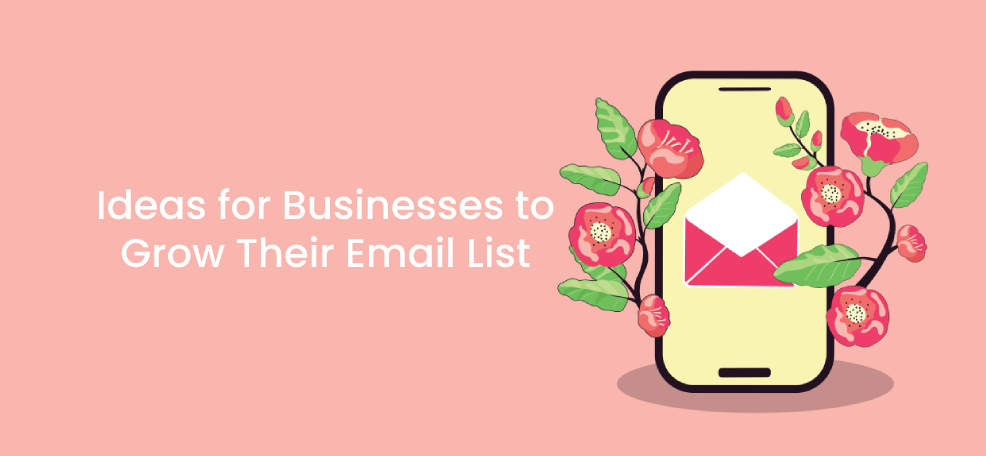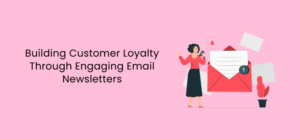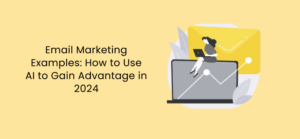Building an email list and utilizing it for promotion could be one of the successful marketing cornerstones.
However, the problem with email marketing is the difficulty of persuading people to opt-in and become subscribers. Businesses are trying various methods to create solid email lists. In fact, it is common to buy an email list. Such an approach should be avoided for two reasons:
- More often than not, an email list you purchase will not have your target customers.
- The emails in a purchased list did not consent to have you add them, meaning that if they receive a promotional email, they will flag it as spam and report you, which will decrease your email sender reputation.
Instead of wasting money on prepared email lists, a brand should grow its subscribers organically. This article will share some strategies to help you grow an email list and turn it into a means to raise brand awareness and attract new customers.
Incentivize Potential Subscribers
One of the simplest methods to get people to click on the subscribe button is to offer them something in return. When it comes to email lists, the pickings might be slim. In addition, a lot depends on what the business actually is.
When it comes to incentives, think about what you can offer to potentially interested people. Perhaps a 10% discount on their first order would persuade them to opt-in for an email list and complete the transaction? You could also offer free shipping for free orders for everyone who becomes part of an email list.
Even though some of these incentives might seem pretty lackluster, they can still do the work, given how every little bit helps.
Create an Attractive Email Signup Form
People will not sign up for an email list if it is difficult to find. It is recommended to have the signup form clearly visible on the website. A website’s sidebar is a common location to place an email signup form.
Some websites also have the policy of creating a popup that appears for visitors. This popup asks people to opt-in for an email list and usually has incentives, such as the ones mentioned in the previous section.
Whether pop ups increase subscriber rate is difficult to determine without proper testing. Certain people will find them annoying and can even leave the website because of the popup. Others might find it useful because they would like to become subscribers.
This means that if you rely on just popups to promote email signups, you will miss out on a number of visitors who might potentially be interested in being part of your email list.
Lastly, make sure that there are no distractions that prevent site visitors from noticing an email subscription button. If the goal is to grow an email list, do not clutter the website with other call-to-action buttons.
Choose Words Carefully
The difficulty of writing persuasive copies is quite clear. When it comes to email signups, you usually do not have that much room to work with. Writing a long text on a website’s section about email signup would not look good. If anything, such an approach is likely to discourage people from signing up for an email list.

Besides polishing the copy and making the most out of those few words that are available, businesses should also try different fonts, colors, and sizes. It will take time to test different variations, but that is to be expected when you want to land on one that brings the most clicks.
Take Advantage of a Waiting List
The fear of missing out is one of the considerations for those looking to attract more subscribers. For example, if there is an offer for an online course that one could get only by signing up for an email list, why not limit the number of available slots?
When someone notices the offer, they are more likely to jump at any opportunity to sign in because they might be afraid of missing such an opportunity.
Minimize the Necessary Clicks
One of the biggest reasons behind abandoned online shopping carts is the number of clicks a shopper has to make to finish the transaction.
A similar thing applies to email lists. If someone wishes to become a subscriber but has to get through multiple sections to reach the end, they are more likely to give up than complete the process.
An opt-in process should consist of a couple of clicks at most. Make it so that interested people can enter their email address, confirm their consent, and subscribe to an email list after clicking the “subscribe” or “register” buttons on the website.
Thank New Subscribers Immediately
Sending a “thank you” as a token of your appreciation as soon as someone subscribes is not really a direct way to grow an email list because the thank you comes after a person subscribes.

No, the goal with this idea is to show your gratitude and indicate that you care. A small gesture like this will work toward subscriber retention. After all, you do not want to deal with people unsubscribing, right?
Organize Giveaways and Surveys
Exclusive email subscriber giveaways could work to your advantage. Similar to how brands organize contests on social media to attract new followers, you could implement the same strategy for building your email list.
A prize, no matter how small it might seem, still creates an incentive for people to opt-in for an email list. Something as simple as a pair of all-over print socks that new email subscribers receive might lead to an influx of new subscriptions.
Similar to how offering free stuff engage more potential subscribers, a survey could also prove to be a decent tactic.
For instance, you could ask site visitors to participate in a survey and submit their feedback. If they wish to see the results of the survey, they can subscribe to an email list and receive it after the information becomes available. It is a strategy that ContentKing did recently by asking SEO people about dealing with issues. As a bonus, all the survey participants got a free pair of socks!
With that said, when it comes to giveaways, it is crucial to weigh one’s ROI. If you spend too much on the prizes but get little in return despite attracting more email subscribers, it would probably be better to stick to other strategies.
Be Upfront About Email Frequency
Being upfront about email frequency is one of the most commonly overlooked things in email marketing.
Different email subscribers have different expectations, but they would still like to know what to expect prior to clicking that “subscribe” button.
For some, multiple emails throughout the week might feel too much because of a cluttered email inbox, whereas for others, it would not be a problem because they check their emails multiple times per day.
Of course, you should also deliver on your promises. If you claim to send emails once every week, make sure you do not dash your subscribers’ expectations.
Send Newsletters
A weekly or bi-weekly newsletter with a roundup of valuable information gives customers value. Additionally, businesses can include some promotional offers and other ideas into the newsletter to raise brand awareness and attract more traffic to their website.
A newsletter could be a roundup of your top-performing content, relevant industry news, customer stories and testimonials, and exclusive deals to email subscribers.
Optimize for Mobile Devices
Keep in mind that roughly half of the internet traffic comes from smartphones and tablets. It means that failing to optimize your website and emails for mobile devices will result in losing potential subscribers.

As for the emails themselves, there are also a few aspects to consider when targeting mobile users:
- The subject line length should not be too long
- The email should have a pre-header text
- The email copy should be concise to fit on a device’s screen
- The email should make sense even if the images do not load
- The call-to-action button should be located near the top
- The emails should be tested on multiple devices to make sure that they work properly
Drive Relevant Traffic to the Website
The final piece of advice is quite straightforward. Do not expect to gain many email subscribers if your website traffic is irrelevant. Random people that stumble upon a site are unlikely to be interested in your goods or services, meaning that they are even less likely to actually subscribe to an email.
A website’s traffic can be improved by focusing more on SEO, PPC marketing, and ad campaigns on social media, to name a few.
Once you get rid of irrelevant visitors, you should notice an increase in people opting in to subscribe to your email list.




